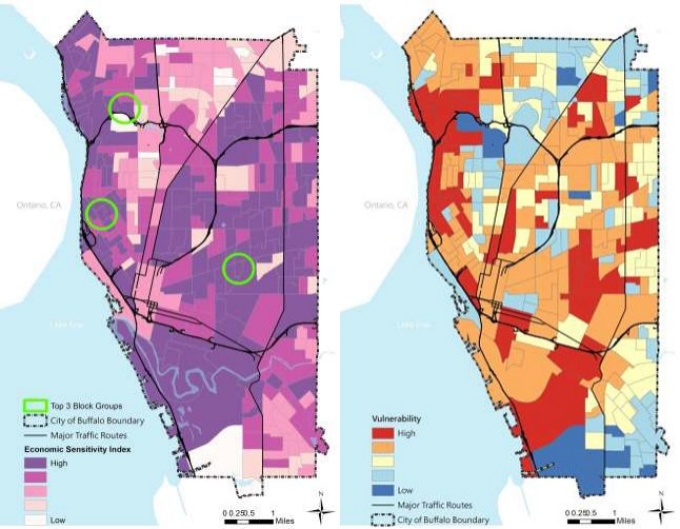Winter Storm Vulnerability

Block Group analysis of Economic Sensitivity (left) and Vulnerability (right)
Students
Juweria Dahir
William Siegner
Tom Voigt
Faculty
Ji Young Park
Term
URP 538, Spring 2018
Program
MUP
On October 12, 2006, Buffalo, New York was hit with a severe snowstorm. The Western New York region is no stranger to heavy lake-effect snowstorms, however, this particular winter storm occurred very early into the fall season.
Nearly 24 inches of snow accumulated over the course of a 24-hour period. Several situational elements led to this storm having a significant impact on the city of Buffalo. The resulting impact garnered a State of Emergency and a federal Major Disaster Declaration. The snowfall amounts of this storm were not out of the ordinary for Buffalo, but the timing of the storm resulted in widespread power outages throughout the region. Some of those power outages lasted beyond a full week.
Once we started looking closely at other socio-economic connections in the data, it was clear that Buffalo neighborhoods are exponentially different and can have different levels of resiliency.
– Juweria Dahir, MUP
The number of resulting impacts from the October storm of 2006 had a lasting impact on the city and the community members who lived through the damage and extended power outages. These impacts had not yet been quantifiably measured beyond an initial debris removal cost estimated at $169 million.
Through examining the impact on Buffalo’s utility, this report illustrates the true economic impact that severe winter snowstorms can have on cities.